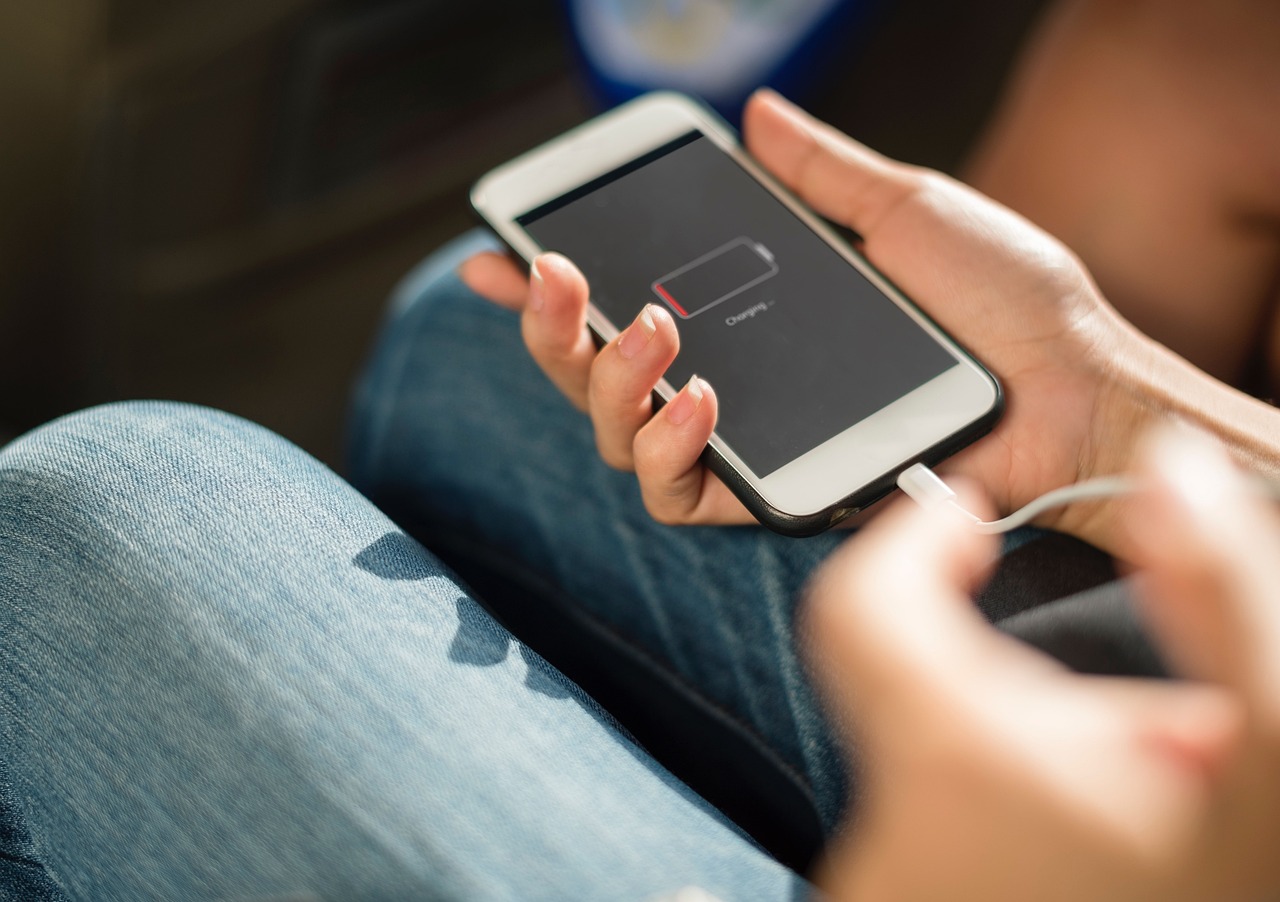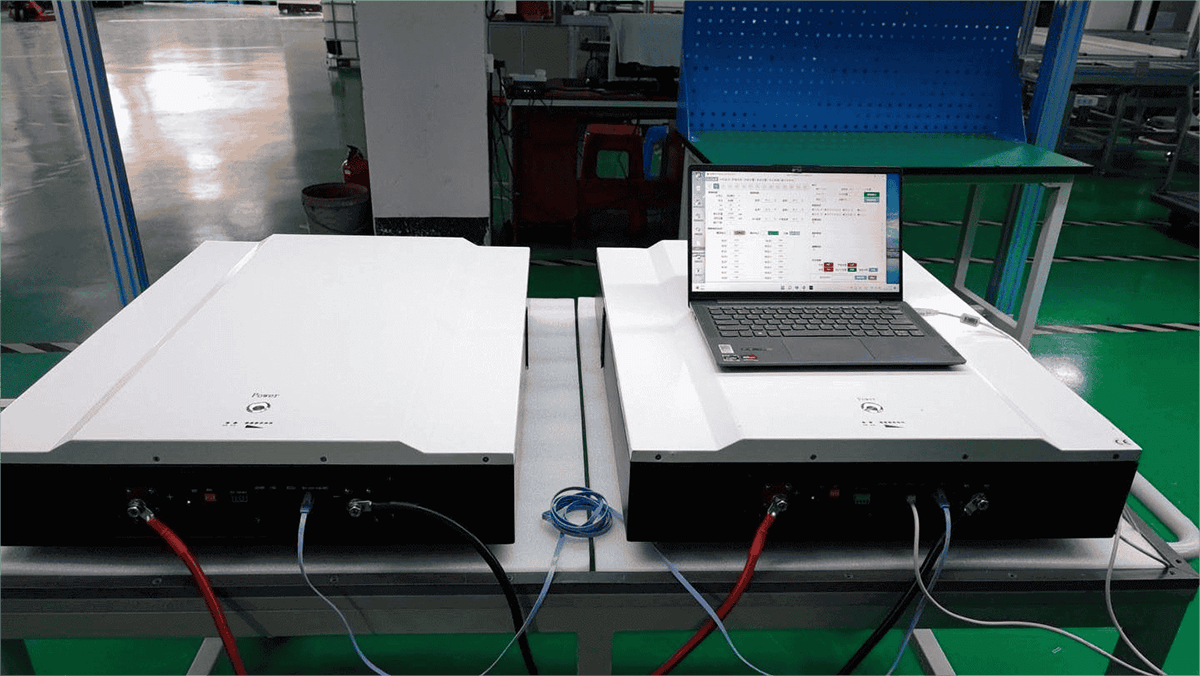LiFePO4 Battery VS LiPo: Which is the Superior Power Source?

When it comes to powering up the world, there's no competition: Lithium Iron Phosphate (LiFePO4) and LiPo batteries are both essential pieces of the puzzle - they're like fire and ice in perfect harmony! Whether you need reliable energy storage for your electric car or responsive power for a robot arm, understanding the differences between these two technologies is key.
In this article, we'll explore their unique advantages and disadvantages so that you can make an informed decision about which one better suits your application needs. Get ready to embark on a journey of battery enlightenment as we uncover the secrets behind LiFePO4 vs LiPo!
Characteristics Of Lifepo4 Batteries
LiFePO4 batteries are becoming increasingly popular due to their superior energy storage capabilities and improved safety features. The chemical composition of LiFePO4 is composed of lithium, iron and phosphate ions, which creates a stable base for the battery's voltage curve and offers consistent output. This makes it an ideal power source for applications that require high current bursts or long-term stability performance. Additionally, this type of battery has a relatively low self-discharge rate compared to other lithium ion chemistries.

One of the most significant advantages offered by LiFePO4 batteries is their ability to provide a steady level of power over multiple cycles. Unlike other types of rechargeable batteries such as NiCad and NiMH cells, LiFePO4 can consistently deliver its full rated capacity regardless of how many times it has been discharged before recharging. Furthermore, they offer extended cycle life with minimal degradation so you can enjoy reliable power delivery without having to replace them frequently.
The combination of these properties makes LiFePO4 batteries an attractive option for consumers who need reliable power for their electronic devices. With a lower cost per watt-hour compared to other rechargeable technologies, coupled with enhanced safety features, it's easy to see why LiFePO4 could replace traditional lead-acid batteries. Using these advanced batteries will keep your gadgets running longer while giving you peace of mind knowing your devices are being powered safely and efficiently.
Characteristics Of Lipo Batteries
LiPo batteries are the powerhouses of modern technology, providing extraordinary amounts of energy in a compact package. It's like holding an entire electrical grid in your hand! When considering LiPo batteries as a potential source of power for any application, it is important to understand their characteristics and how they compare to other types of battery such as Lifepo4.
In terms of voltage output, LiPo batteries offer higher voltages than Lifepo4; up to 4.2V for each cell compared with 3.7V for Lifepo4 cells. This makes them ideal for applications requiring high-power outputs over short periods of time - think drones or electric cars. In addition, they have excellent charge/discharge rates and can be recharged hundreds of times without significant degradation in performance.

The downside to using LiPo batteries is that they must be handled carefully due to their temperature sensitivity; temperatures above 140°F (60°C) can cause permanent damage and even fire hazards if not monitored properly. However, as long as users take proper precautions while charging and discharging these powerful batteries, they should enjoy years of reliable service from them.
Lifepo4 Battery VS LiPO
(1) Cost Comparison
When it comes to battery technology, cost is often a deciding factor for consumers. Comparing the price of Lifepo4 batteries and LiPo batteries can help determine which type may be more suitable for certain applications.
To start, let's take a look at the overall lifepo4 battery cost. This type of battery typically costs around $100 per kilowatt-hour (kWh). Depending on its size and capacity rating, this could range from as little as $30 all the way up to over $200. On average, they are slightly cheaper than their LiPo counterparts.
LiPo batteries usually come in at just under $150 per kWh, with prices ranging between $50 and almost triple that depending on what you're looking for. However, these cells tend to offer higher performance capabilities than Lifepo4s do in most cases. So although LiPos have a higher initial cost associated with them, they may end up being worth it based on your needs.
In terms of raw numbers alone, Lifepo4s have an edge when it comes to cost analysis due to their lower price point compared to LiPos. But if you need top performance out of your power source then investing in a pricier LiPo option may be the right decision for you - both financially and functionally speaking.
(3) Efficiency And Capacity
When it comes to choosing a power source for your needs, there is no clear cut answer as both Lifepo4 and Lipo have their own unique advantages. However, efficiency and capacity can be used as indicators of which battery may be the superior choice for you.
Lifepo4 batteries are renowned for their high energy density and low self-discharge rates. This makes them one of the most efficient types of rechargeable batteries on the market today:
- They can hold up to three times more charge than traditional lead acid batteries while also being much lighter in weight.
- Their average lifespan is around 3000-5000 cycles with proper maintenance, making them ideal for long-term use.
- The standard charging time is between two to four hours due to their fast charging capabilities.
- They offer excellent safety features compared to other lithium-ion based products such as overcharging protection and temperature control systems.

On the other hand, lipos boast an impressive capacity rating that far surpasses that of lifepo4s. While they tend to weigh slightly more, they still provide good value for money when factoring in the cost per watt hour of storage capacity:
- Lipos typically have higher capacities than similar-sized lifepo4 models allowing you to store more energy from less space taken up by the cells themselves.
- With careful usage and maintenance, these packs can last anywhere from 500-1000 cycles before needing replacement depending on application requirements and the quality level purchased.
- Charging time is usually shorter at 1-2 hours but this varies depending on cell specifics like chemistry type or wire gauge size used during the setup configuration process.
- Specialized BMS boards are required if wanting additional safety features such as short circuit prevention or Undervoltage detection systems in place during operation periods.
No matter which battery technology you choose to go with, understanding its pros and cons will help ensure you make a wise decision when selecting a reliable power source that meets all your specific requirements - whether it be maximum storage capacity or greater longevity across multiple uses cases scenarios.
(4) Safety Features
When it comes to discussing the safety features of Lifepo4 and lipo batteries, there are a few key points we must consider.
Firstly, both battery types have built-in protection mechanisms that protect against short circuits and overcharging. This ensures the safety of the user by preventing any potential fire hazards. Secondly, Lifepo4 batteries use a specifically designed fireproof material which is inherently safer than other battery materials used in Lipos.

In addition to these two important factors, Lifepo4 batteries also feature an advanced thermal management system that actively monitors the temperature of cells and prevents overheating or cold discharges. This helps maintain optimal performance while ensuring efficient power output with minimal risk of damage or danger due to excessive heat build-up.
On top of this, Lifepo4s have a wider operating temperature range than Lipos making them more suitable for high-drain devices where discharge rates may be unpredictable.
All things considered, when comparing Lifepo4 vs Lipo in terms of their respective safety features, it's clear that Lifepo4 provides superior protection from possible risks associated with using rechargeable batteries such as short-circuiting and overcharging. Furthermore, its advanced thermal management capabilities make it an ideal choice for those looking for reliable long-term energy storage solutions without compromising on safety measures.
(5) Maintenance Requirements
Carefully caring for and regularly maintaining batteries is key to ensuring optimal performance. Both LiFePO4 and LiPo battery technologies require attention and appropriate care instructions in order to provide consistent power output over time. The following table illustrates the required maintenance steps for both types of technology:
| LiFePO4 BatteriesLiPo Batteries | ||
|---|---|---|
| Charge/Discharge Cycles | Charge every 6-12 months Do not exceed 500 cycles per year | Charge at least once a month Do not exceed 1,000 cycles per year |
| Storage Temperature | -20°C to 60°C (-4°F to 140°F) Avoid extreme temperatures (Too hot or too cold) | 0°C to 45°C (32°F to 113°F) Avoid extremely high temperatures (above 45ºC/113ºF) |
For both battery types, it’s important that users avoid leaving their cells uncharged for extended periods of time as this will lead to irreversible damage and eventual failure. Additionally, users should always ensure proper ventilation when using any type of lithium battery system and take note of the manufacturer's specific safety warnings or guidelines regarding charging or discharging.
Finally, it’s recommended that all battery systems be stored in an environment where temperature and humidity are kept within acceptable levels as extremes can drastically reduce the lifespan of the cell chemistry.

In summary then, while both LiFePO4 and LiPo batteries offer distinct advantages, they also come with various maintenance requirements which must be followed if one hopes to get maximum value from their purchase. From charge/discharge cycle limits to storage temperature constraints, understanding how best to maintain these two types of battery systems will pay off in spades down the line by increasing longevity and providing reliable performance during use.
(6) Charging Time And Output Voltage
When comparing the charging time and output voltage of lifepo4 batteries to lipos, it's clear that lifepo4s have a distinct advantage. They can be charged at rates up to 10C, allowing them to charge much faster than lipos. The maximum output voltage for lifepo4 batteries is 4.2V per cell compared with 4.2-4.35V per cell for lipos - this makes them more reliable in terms of power delivery over longer periods of time.
Lifepo4 batteries also come with built-in safety features such as short circuit protection and temperature control(Battery management system), which helps protect against thermal runaway or other hazards associated with high current loads.

Additionally, they are far less prone to swelling when fully charged due to their higher internal resistance levels compared to lipos. This results in fewer maintenance issues during long run times while still providing superior performance compared to its Lipo counterpart.
The superior charging rate and reliability of Lifepo4 cells make them an ideal choice for powering devices that require frequent charge cycles or extended run times without sacrificing overall performance or risking any potential damage from overcharging or overheating.
With these factors considered, it’s easy to see why Lifepo4 has become the go-to battery solution for many applications where portability and efficiency are key considerations.
(7) Discharge Cycles And Durability
In terms of an energy source, it is almost impossible to beat the power and convenience offered by both Lifepo4 and LiPo batteries. But when it comes to choosing between them, which one reigns supreme? The answer lies in understanding their individual discharge cycles and durability.
To start off with, let's look at Lifepo4 battery technology. This type of battery has a significantly longer cycle life than that of its LiPo counterpart - boasting up to 3000-5000 cycles compared to 400-800 for LiPos! That means you can expect your Lifepo4 pack to last much longer than a comparable LiPo over time:
- A typical Lifepo4 cell could potentially offer 2x more charge cycles than a similar capacity LiPo battery.
- With proper care and maintenance, Lifepo4 cells will hold 80-90% of their initial capacity after 2000+ cycles - making them far superior in terms of longevity compared to Lipos which tend to degrade quickly under high load conditions.
- When comparing charging times between the two types of batteries, Lifepo4 generally takes around 6 hours or less while LiPos require roughly 8 hours or more depending on size/capacity rating of each specific model.
- Lastly, the overall performance capabilities between these two technologies are quite different. Lifepo4 offers higher peak current outputs (upwards of 150A) while LiPos typically provide only 50-100A max currents depending on size/rating factors.

It’s clear that there is no substitute for reliable long term performance; something that neither battery chemistry provides without careful consideration towards usage patterns and regular maintenance schedules as part of their respective lifespans.
When investing in either type of technology it pays dividends to be aware of all associated details such as expected cycle duration vs total lifespan along with other limiting factors like maximum output voltage ratings before committing resources down any particular path especially if looking for sustained high rate discharges from any given pack!
(8) Compatibility With Electronics/Devices
When it comes to compatibility with devices and electronics, LiFePO4 batteries hold the edge over their LiPo counterparts. This is because of their lower voltage output per cell ?3.2V vs 4.2V for a single LiPo cell. The lower voltage makes them much more suitable for powering electronic devices such as smartphones, laptops and tablets that require a safe power source with stable outputs.
LiFePO4 cells can also be used in series or parallel configurations without any loss in performance, compared to LiPos which suffer from significant losses when connected together in series/parallel fashion due to the increased resistance they incur.

Additionally, while LiPos will start losing capacity after 300-500 charge cycles, depending on usage patterns, Lifepo4s retain their capacity very well even after 1000+ cycles making them ideal for long-term use in consumer electronics applications where battery longevity is essential.
In conclusion, if you’re looking for a reliable power source that offers superior compatibility with consumer electronics and other devices, then Lifepo4 batteries are your best bet! They provide excellent results in terms of both safety and performance and offer good value for money thanks to their longer lifespan compared to Lipos.
(9) Environmental Impact
Having discussed the compatibility of LiFePO4 batteries and Lipo batteries with various electronic devices, it is now time to analyze which battery technology has a more favorable impact on the environment. When considering environmental factors such as recyclability, air pollution, hazardous waste disposal and carbon footprint, LiFePO4 clearly emerges as the superior power source.
LiFePO4 offers unparalleled recyclability when compared to other rechargeable battery technologies. In fact, LiFePO4 cells can be recycled up to eighty percent of their original capacity - making them an extremely attractive choice for those concerned about sustainability. Additionally, since LiFePO4 cells are considered non-toxic materials, they pose no risk of generating harmful byproducts during recycling. This makes it easier for businesses and individuals alike to dispose of or recycle these batteries responsibly without fear of causing any damage to the environment.
In terms of energy resource usage, both LiFePO4 and Lipo require roughly equal amounts of electricity to charge; however, the former tend to use significantly less water than its counterpart in production processes due to its lack of flammable components. Furthermore, while both types produce negligible levels of hazardous waste upon disposal if handled properly including proper storage away from extreme temperatures only LiFePO4 contains no combustible material which drastically reduces potential fire hazards upon disposal or malfunctioning cases.

Lastly, given that most modern-day electronics powered by LiFePo4 run off renewable energy sources like solar panels or wind turbines rather than fossil fuels (which emit large amounts of CO2 into the atmosphere), this type of battery contributes far lower levels of greenhouse gases towards our already fragile atmosphere - thereby reducing one’s personal carbon footprint by quite a bit over long periods.
It becomes clear then that when analyzing environmental impact alone, choosing LiFePO4 batteries over Lipo is not merely preferable but essential in order to ensure better stewardship over natural resources while minimizing negative externalities caused by misuse or negligence concerning either form of rechargeable battery technology.
(10) Applications/Uses For Each Battery Type
There are notable differences between lifepo4 and lipo batteries when it comes to practical applications. According to the latest statistics, nearly three-quarters of industrial battery power sources use LiFePO4 cells. As a result, these versatile energy solutions have become an integral part of manufacturing in various industries.
LiFePO4 batteries are well suited for medical equipment, solar storage systems, military gear, telecommunications devices and more due to their superior cycle life compared to other lithium-ion chemistries.

Meanwhile, LiPo (lithium polymer) batteries find widespread application in consumer electronics such as smartphones and tablets thanks to their lightweight design and high energy density. Additionally, LiPo packs can also be used in drones, RC aircraft and electric vehicles where weight is a critical factor.
The automotive industry has been extensively utilizing both types of battery capabilities over the past years. While most commercial cars still rely on lead acid or NiMH technology, many luxury brands such as Tesla Motors deploy advanced LiFePO4 cell designs in their vehicle's powertrains to achieve greater efficiency and a longer range per charge.
On the other hand, LiPos continue dominating the EV market with their ability to provide consistent performance at lower temperatures which makes them ideal for cold weather conditions that regular lithium-ions cannot handle properly.
It's clear that each battery type offers unique benefits depending on its intended purpose from providing reliable energy output for industrial operations to powering highly portable gadgets like phones or laptops; there's always a suitable option out there available for any situation one might encounter.
(11) Temperature Tolerance
When it comes to temperature tolerance, both LiFePO4 and LiPo batteries have their strengths. Generally speaking, LiFePO4 cells perform better in extreme heat than LiPo cells - however, the reverse is true for cold temperatures. Let's take a closer look at how each type of battery fares when exposed to different temperatures:
| Battery Type | Heat Resistance | Cold Resistance |
|---|---|---|
| LiFePO4 | High | Low |
| LiPo | Low | High |
The thermal stability of LiFePO4 batteries makes them ideal for high-temperature environments since they can safely operate within an ambient temperature range from -20°C to 60°C (or -4°F to 140°F). On the other hand, while LiPo cells are less tolerant of extreme heat, they offer superior performance in colder climates, operating efficiently within an ambient temperature range of 0°C to 40°C (or 32°F to 104 °F).
In short, if you're looking for a reliable power source that will hold up well in hot weather conditions, then opt for a LiFePO4 battery. Conversely, if you need something that won't be affected by cold temperatures then go with a LiPo cell. Regardless of your choice though, you'll want to make sure that whatever battery you choose has good thermal stability so that it maintains its full capacity throughout its entire operating lifespan.

Conclusion
Overall, LiFePO4 and LiPo batteries are both great power sources with their own unique advantages. When it comes to choosing the superior battery type for your needs, there is no one-size-fits-all answer. The right choice depends on factors such as cost, efficiency, capacity, safety features, applications/uses, temperature tolerance, weight and size.
LiFePO4 batteries come out ahead in terms of cost and safety while offering comparable performance when compared to LiPo batteries. On the other hand LiPos offer higher capacities at a smaller size and lighter weight making them more suitable for certain applications where space is limited or weight matters most. It's like comparing apples to oranges - you can't decide which tastes better until you try them both!
The decision between these two battery types ultimately boils down to personal preference and the particular requirements of the application or device being powered. Think of it this way: if you need an affordable workhorse that won't let you down then go with a LiFePO4; but if you want something lightweight and compact that will last longer then opt for LiPo ?just make sure you take all relevant safety measures into consideration first!
